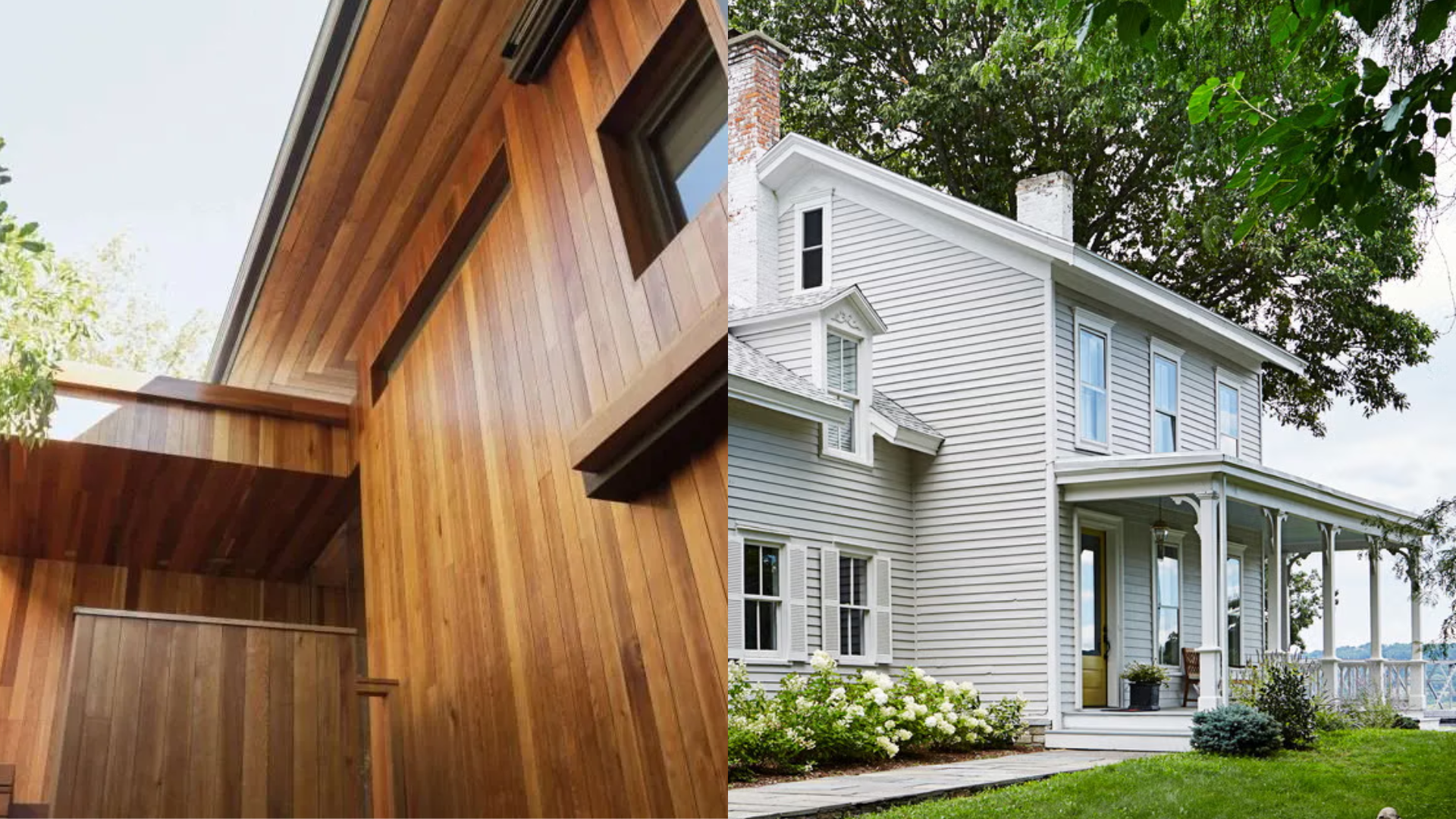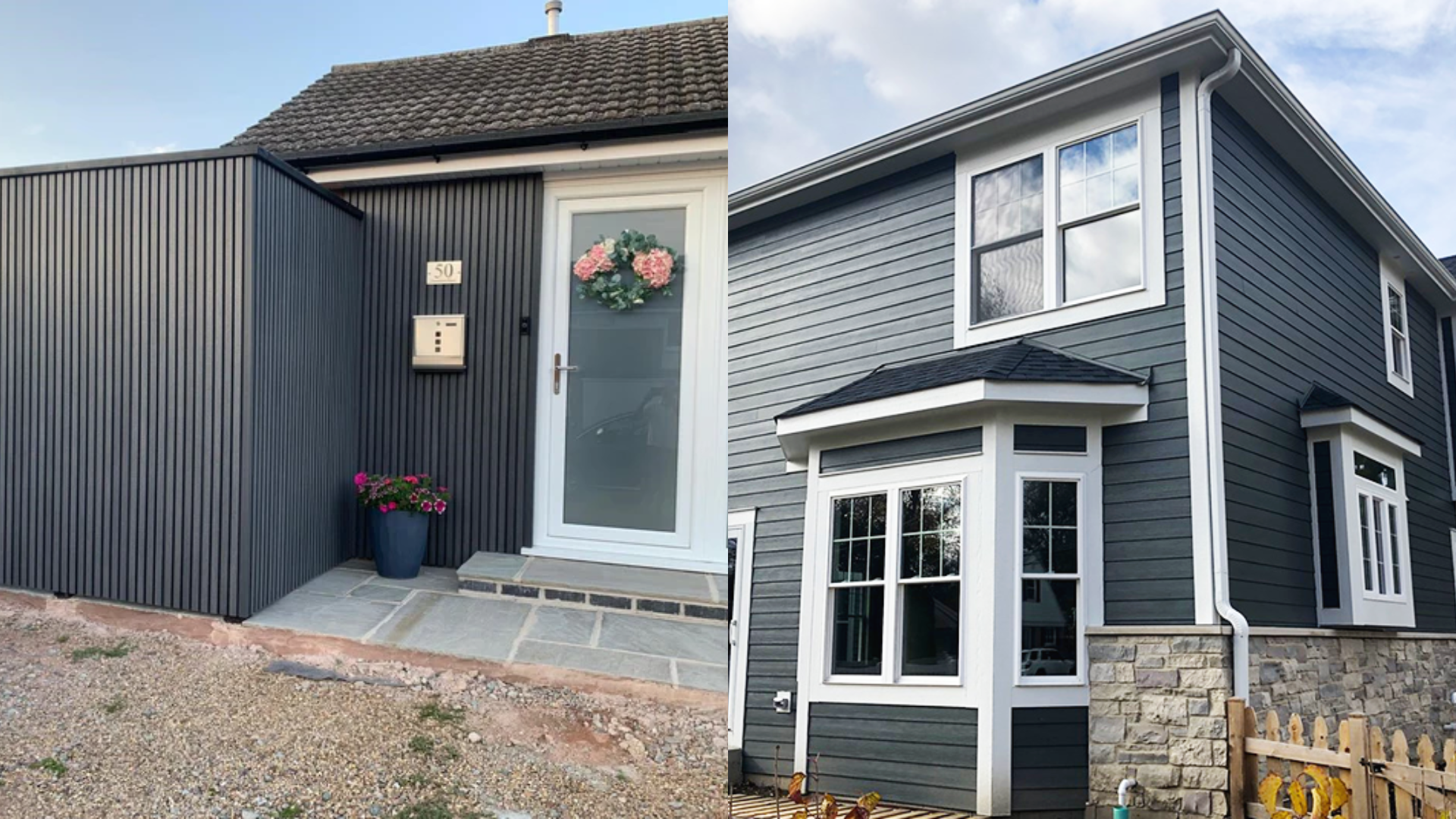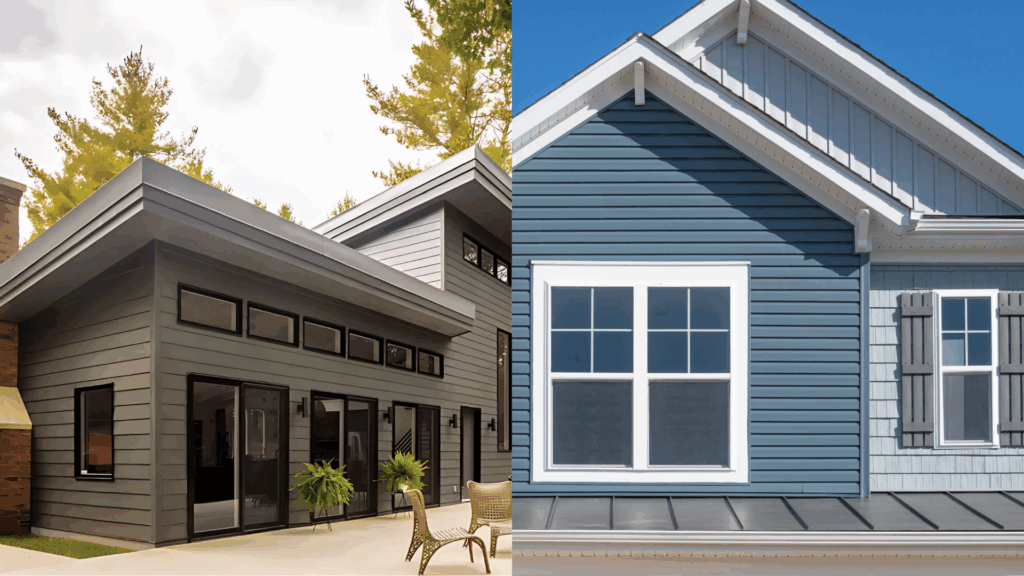When I was looking into siding options for my home, I kept hearing about composite and vinyl siding.
At first, I had no idea what the difference was. Both looked good, seemed to last a long time, and didn’t seem too hard to take care of.
But the more I read, the more I realized there are some big differences between the two.
If you’re also trying to decide which one is better for your home, you’re in the right place.
In this post, I’ll walk you through what composite and vinyl siding are, how they compare in price, looks, durability, and more.
I’ll also share some pros and cons so you can make a smart choice that fits your home and budget.
Let’s break it down in a simple, easy-to-understand way, just like I needed when I started.
What Is Composite and Vinyl Siding?

When I first started looking into siding, I had to figure out what composite and vinyl siding actually are. Here’s what I learned.
Composite siding is made from a mix of materials like wood fibers, plastic, and special resins. These are all pressed together to form boards that look a lot like real wood.
Some types are called engineered wood or fiber cement. The cool part is that composite siding is made to be strong and last a long time, even in tough weather.
Vinyl siding, on the other hand, is made from a type of plastic called PVC.
It’s one of the most popular siding options because it’s lightweight, low-maintenance, and comes in tons of colors and styles.
Both are great in their own way, but they’re definitely different.
Composite Siding vs. Vinyl Siding: Key Differences
When I started comparing composite and vinyl siding, I realized it really comes down to what matters most to you: price, look, strength, or something else. Let’s take a closer look at how they’re different.
1. Cost
Price was one of the first things I wanted to understand, and it’s a big deal for most homeowners.
Vinyl siding is the more budget-friendly option. It costs less to buy and install. Because it’s light and easy to handle, you might even save money on labor. If you’re trying to stay on a tight budget, vinyl might be the way to go.
Composite siding costs more. The materials are more advanced, and installation takes more time and skill. But it can be a smart investment if you’re planning to stay in your home for many years and want something strong and long-lasting.
So, if cost is your top concern, vinyl wins. But if you want more durability and can spend a bit more, composite could be worth it.
2. Looks and Style
Next, I wanted to make sure the siding looked good, because no one wants a house that looks boring or fake.
Composite siding has a more natural look. It’s made to look like real wood, with grain and texture you can actually feel. Plus, you can paint or stain it to match your style. If you prefer a cozy, classic look, composite offers more options.
Vinyl siding also comes in a wide range of colors and styles, but it usually looks more plastic-like. Some high-end vinyl tries to mimic wood, but when you get close, you can usually tell the difference.
If the outside of your home matters a lot to you, and you want that real-wood look, composite has the edge. But vinyl is still a solid option if you’re okay with a more modern, smooth look.
3. Durability and Strength
I live in an area that gets some rough weather, so I really needed something that could hold up over time.
Composite siding is tough. It’s made to resist rot, bugs, moisture, and even strong winds. It won’t crack easily and can last 30 to 50 years if you take care of it. That’s a long time!
Vinyl siding is also pretty strong, but not quite as tough. It can crack in very cold weather and may warp if it gets too hot. It usually lasts 20 to 30 years, which is still good, but not as long as composite.
If you want siding that can take a beating and still look good, composite is probably the better choice.
4. Maintenance
No one wants to spend every weekend working on their siding, so this part mattered a lot to me.
Vinyl siding is super easy to take care of. You don’t have to paint it, and it only needs a rinse every now and then to wash off dirt. It doesn’t rot or attract bugs either.
Composite siding is low-maintenance, too, but not totally hands-off. Depending on the type, you might need to repaint or reseal it after a few years. But compared to real wood, it’s still way easier to deal with.
So if you want something truly low-fuss, vinyl wins. But composite is still a good option if you’re okay with a little upkeep now and then.
5. Insulation and Energy Use
I also thought about how each type of siding would affect my energy bills.
Composite siding is thicker and denser, which means it keeps heat in better during winter and keeps it out in summer. This can help lower your heating and cooling costs over time.
Vinyl siding doesn’t offer as much insulation on its own, but you can buy insulated versions. These have a layer of foam underneath that helps improve energy efficiency.
If saving energy is important to you, composite may have the upper hand, unless you go with insulated vinyl, which can be a nice middle ground.
6. Environmental Impact
I try to think about the planet when I make big home choices, so I looked into how eco-friendly each type is.
Composite siding is often made with recycled materials, and it lasts a long time, which means less waste over the years. Some brands even focus on green manufacturing.
Vinyl siding is made from plastic, which takes a lot of energy to produce. It’s also harder to recycle when it’s removed. So while it’s durable and lasts for decades, it’s not the best option for the environment.
If you want a greener home, composite is the better pick here.
7. Installation
Lastly, I thought about how hard it would be to install each type, and if I’d need to engage professional siding installation services.
Vinyl siding is light and clicks together easily, which makes it a favorite for DIY projects. It’s quick to install and doesn’t require fancy tools.
Composite siding is heavier and usually needs special tools or professional help. The boards have to be nailed in carefully, and sometimes they need to be painted after installation.
If you’re hoping to do the work yourself or save on labor, vinyl is the easier choice. But if you want a strong and polished finish, it may be worth hiring someone to install composite.
Every home is different, and every homeowner has different needs. But knowing how these two siding types compare can really help you make a smart, confident choice.
Pros and Cons of Composite and Vinyl Siding

When I was trying to choose between composite and vinyl siding, I found it super helpful to list the pros and cons side by side. It made things way clearer and helped me figure out what matched my needs best.
Composite Siding
| Pros | Cons |
|---|---|
| Looks like real wood | Costs more than vinyl |
| Strong and long-lasting (30–50 years) | Heavier and harder to install |
| Resists rot, bugs, and moisture | May need repainting or resealing over time |
| Better insulation for hot and cold weather | Not great for DIY projects |
| Often made with eco-friendly materials | Fewer color options without painting |
Vinyl Siding
| Pros | Cons |
|---|---|
| Affordable and budget-friendly | Can crack in cold weather |
| Easy to install (great for DIY) | May warp in high heat |
| No painting needed – low maintenance | Doesn’t look as real as wood |
| Lots of colors and styles to pick from | Less insulating without added foam |
| Resists rot and pests | Not very eco-friendly (plastic-based) |
Seeing the good and bad sides of each helped me think about what really mattered most, like budget, style, and how much work I wanted to do later.
When to Use Composite or Vinyl Siding
Both are great, but they shine in different situations. Here’s how I figured out which one made more sense.
Use composite siding if:
- You want your home to have a real wood look without using actual wood
- You live in a place with tough weather, like strong winds or lots of rain
- You’re planning to stay in your home for a long time and want something that lasts
- You care about using eco-friendly materials
- You don’t mind paying more upfront for better quality
Use vinyl siding if:
- You’re on a tight budget and want something affordable
- You like easy projects or want to try a DIY installation
- You don’t want to worry about painting or sealing
- You want a wide range of colors and styles to pick from
- You live in a mild climate where weather damage isn’t a big concern
Mixing Composite and Vinyl Siding:
Yes, you can mix both composite and vinyl siding on the same house.
I’ve seen homes where composite siding is used on the front for that rich, wood-like look, and vinyl is used on the sides or back to save money.
This combo gives you the best of both worlds, style and savings. It also lets you highlight certain areas of your home without going over budget.
Just make sure the colors and styles match well so everything looks smooth and planned.
If done right, mixing siding can boost your home’s curb appeal without breaking the bank. I think it’s a smart option!
Both siding types can look great and protect your home; it just depends on what matters most to you.
For me, once I listed out my needs, the choice became much easier.
Conclusion
After researching both composite and vinyl siding, I feel more confident about making the right choice for my home.
I realized there’s no one-size-fits-all answer; it depends on what matters most to you.
For me, thinking about things like my budget, how long I plan to stay in my home, and the level of maintenance I’m willing to deal with was very helpful.
Composite siding resembles real wood and lasts longer, but it is more expensive.
Vinyl siding is less expensive and easier to maintain, but it doesn’t offer the same natural appearance.
Opting for composite or vinyl comes down to choosing the material that best suits your home, style, and budget.

